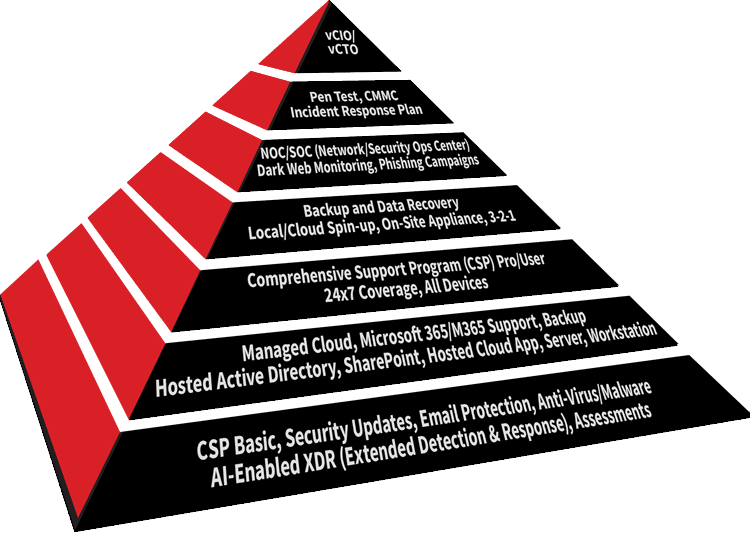Bryley Dark Web Monitoring provides critical alerts should your business domain or employee credentials be discovered on the Dark Web.
Bryley leverages the power of both advanced technology intelligence and human analysts to proactively search for and analyze compromises and exposed logins that can make your business a hot target for cybercriminals.
24/7/365 Dark Web Monitoring
Bryley Dark Web Monitoring lets you identify and investigate exposed login credentials linked to your business email domains, employee emails you designate or IP addresses.
Resolve the Problem of Password Reuse
Individuals on average reuse credentials for five different logins at the same time.1 Dark Web Monitoring allows you to overcome the risks related to bad passwords.
Get Alerts and Reports with Bryley’s Guidance for Lowering Your Risks
Access reporting and analytics that include your business’ risks and evolving bad-actor trends so you can take preventive action to avoid cyberthreats.
Dark Web Stats
- Fifteen billion stolen login pairs – username and password – have been detected circulating on the Dark Web.2
- Sixty-seven percent of breaches can be traced or linked to phishing attacks and credential theft.3
- Over fifty percent of sites on the Dark Web are used for criminal activities, including the sale or exploitation of digital credentials.4
- Sixty percent of the information available on the Dark Web could negatively impact most businesses’ security and financials.5
Proactive Prevention
Cyberthreats are inevitable. But Dark Web Monitoring helps reduce the risks caused by a major facilitator of these incursions: exposed employee credentials.
This is why Bryley Dark Web Monitoring will help you achieve business continuity. Because how can you know that you will maintain your operations, not derailed by criminal activity, till you know where you stand? For more information about Bryley Dark Web Monitoring please complete the form, below, call 978.562.6077 or email ITExperts@Bryley.com.
- Ponemon Institute
- wired.com and Digital Shadows
- Verizon 2020 Data Breach Investigations Report
- CSO Online
- Ponemon Institute
Bryley Dark Web Monitoring is part of the Bryley Business Continuity Pyramid
Business continuity is the planning and process by which organizations maintain operation, not severely disrupted by a disaster or other unwanted incident.

Bryley Dark Web Monitoring At-A-Glance
- combines human and computer intelligence to identify, analyze and monitor for compromised or stolen employee and customer data
Request More Information


